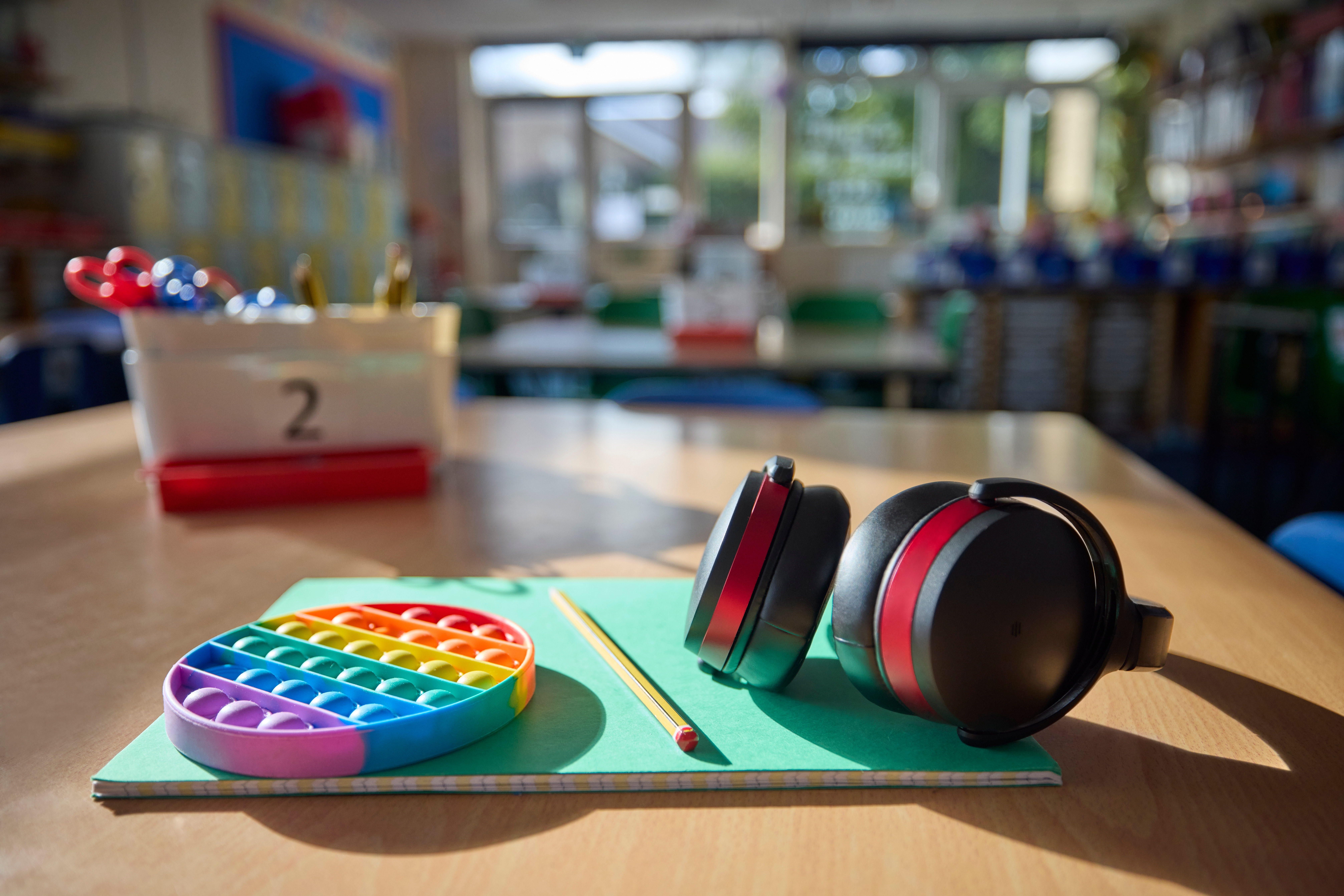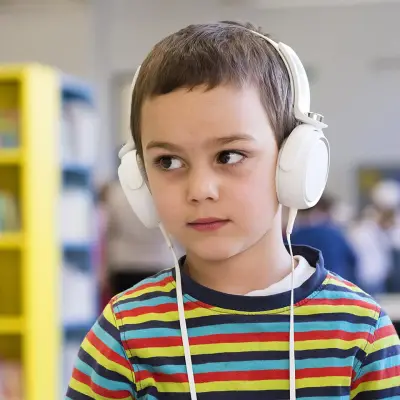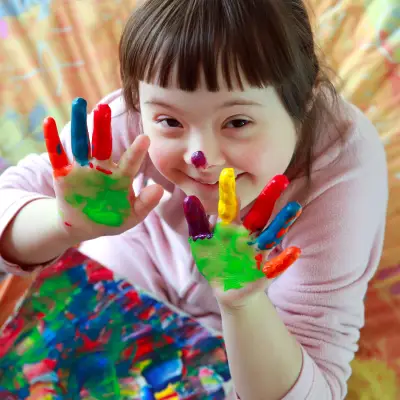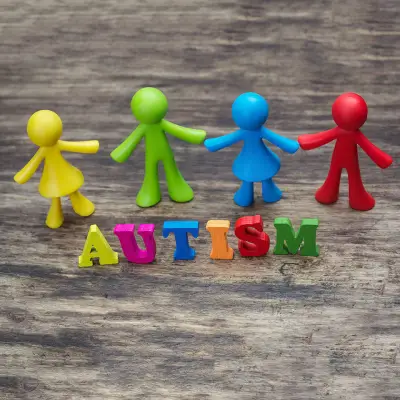Navigating the world with autism brings unique experiences and challenges, one of which can be sensory overload. This phenomenon is more common in individuals with autism, affecting how they interact with their surroundings. Let's explore what sensory overload entails, its signs, management strategies, and how understanding it can deepen our empathy and support for those living with autism.
Jump to:
- What is Sensory Overload?
- Sensory Overload Examples
- The Connection Between Anxiety and Sensory Overload in Autism
- What are the Signs of Sensory Overload?
- What are the Symptoms of Sensory Overload?
- Diversity and Inclusion: Varied Experiences of Sensory Overload
- How to Identify Environmental Triggers for Sensory Overload
- The Importance of Early Intervention
- How Do You Calm Sensory Overload in Autism?
What is Sensory Overload?
Sensory overload is when the senses are overwhelmed by environmental stimuli. For someone with autism, everyday sensations like sound, light, or touch can be felt more intensely. It's as if the volume of the world is turned up, making what might be ordinary for others extraordinary and overwhelming for them.
Sensory Overload Examples
Consider a bustling café: the clinking of cups, the murmur of conversations, and the aroma of coffee blend into a sensory tapestry. For someone with autism, these elements might not blend seamlessly but instead collide, creating an overwhelming sensory environment. Other examples include a crowded shopping mall where the mix of bright lights, background music, and the crowd of shoppers can be overstimulating, or a classroom setting where the rustle of papers, whispers, and the movement of other students can be distracting and intense. Even at home, every day sounds like the hum of a refrigerator, the ticking of a clock, or the texture of certain fabrics can be unexpectedly challenging for someone experiencing sensory overload.

The Connection Between Anxiety and Sensory Overload in Autism
The relationship between anxiety and sensory overload is significant. For someone with autism, sensory overload can be a source of anxiety, intensifying the experience.
What are the Signs of Sensory Overload?
Recognising the signs of sensory overload is essential for understanding and supporting people with autism. While experiences vary from person to person, there are common signs to look out for:
1. Difficulty Concentrating
This includes appearing disoriented or struggling to focus, especially in environments with many sensory inputs.
2. Mood Fluctuations
Watch for rapid changes in mood, such as sudden irritability or frustration, often in response to overwhelming sensory experiences.
3. Physical Reactions
These are direct responses to sensory overload, like covering ears to block out noise, squinting against bright lights, or recoiling from physical touch.
4. Avoidance Behaviours
People experiencing sensory overload might actively avoid certain places, situations, or activities that cause sensory discomfort.
5. Social Withdrawal
Some people might withdraw from social interactions or avoid social settings in response to sensory overload.
6. Fatigue or Sleep Disturbances
The constant barrage of sensory information can lead to exhaustion, with potential impacts on sleep patterns and overall energy levels.

What are the Symptoms of Sensory Overload?
Sensory overload can also trigger internal responses such as:
1. Increased Anxiety
This involves feeling constantly on edge or stressed, often directly tied to sensory input and overstimulation.
2. Feeling Overwhelmed
This is the sense of being completely swamped or engulfed by your sensory environment, leading to feelings of helplessness or discomfort.
3. Physical Symptoms
These can include headaches, nausea, or dizziness as a direct response to overwhelming sensory input.
4. Hyperfocus on Specific Sensory Input
An intense focus or fixation on particular sensory aspects of the environment, often as a coping mechanism.
5. Emotional Distress
Heightened emotional responses such as sudden bouts of crying, anger, or frustration can indicate sensory overload.
6. Difficulty with Daily Tasks
Challenges in performing routine activities due to being easily distracted or overwhelmed by sensory information.
Diversity and Inclusion: Varied Experiences of Sensory Overload
People with autism experience a diverse range of symptoms and triggers. Recognising the individuality of each person's experience with sensory overload is essential. What works for one person might not work for another, and understanding this is key to providing effective support. This includes personalising strategies and interventions to suit the specific needs of each individual.
Variation Across the Spectrum: Sensory overload manifests differently for each person with autism. Some may be hypersensitive to certain stimuli, while others might be under-sensitive. The types of sensory overload experienced can vary greatly, ranging from auditory to tactile sensitivities, and each person's coping mechanisms are unique.
Differences Across Age Groups: The way sensory overload is experienced and managed can change with age. Young children might have different sensitivities and coping strategies compared to teenagers or adults with autism. As people grow and develop, their responses to sensory overload might evolve, requiring adjustments in support strategies.
Inclusive Support Systems: Building inclusive support systems means considering the varied experiences and needs within the autism community. It involves listening to and learning from people with autism, their families, and caregivers and integrating this knowledge into care and support plans.
Education and Awareness: Promoting education and awareness about the diversity of sensory overload experiences is essential. It helps break down stereotypes and misconceptions about autism, leading to a more understanding and accepting society.

How to Identify Environmental Triggers for Sensory Overload
Understanding and identifying what specifically triggers sensory overload is essential. These can range from loud sounds to certain textures. Recognising these triggers allows for better preparation and adaptation of environments to reduce sensory overload. Common triggers for sensory overload include:
- Loud or Sudden Noises: Such as traffic sounds, alarms, or loudspeakers.
- Bright or Flickering Lights: Including fluorescent lighting, strobe lights, or rapidly changing visual media.
- Crowded Spaces: High-traffic areas like shopping centres, public transport, or events with large gatherings.
- Strong Smells: Perfumes, cleaning agents, or food aromas can be overwhelming.
- Textures: Certain fabrics or surfaces that may feel uncomfortable or irritating.
- Temperature Extremes: Environments that are too hot, cold, or have sudden temperature changes.
- Chaotic Visual Environments: Cluttered spaces, busy patterns, or fast-moving visuals.
The Importance of Early Intervention
Early intervention sets a foundation for children with autism to thrive. It fosters a supportive environment where they can develop their skills, confidence, and ability to navigate the world despite the challenges posed by sensory overload. This aspect is particularly important for caregivers and educators who are often on the front lines of noticing the early signs.
Identifying signs of sensory overload early can lead to quicker support and adaptation strategies. By implementing strategies and supports early on, children with autism can develop coping mechanisms to serve them throughout their lives. This proactive approach can also reduce the intensity of sensory overload experiences, making everyday situations more manageable.
Early intervention also means families and educators can access resources and support sooner. This includes occupational therapy, sensory integration therapy, and educational support, which address the challenges associated with sensory overload.
Recommended for you!
Best SellersHow Do You Calm Sensory Overload in Autism?
Calming sensory overload in autism involves several effective strategies:
- Creating a Sensory-Friendly Space: This includes adjusting lights to softer levels to reduce visual stimulation, reducing noise through sound-absorbing materials like rugs or curtains, and maintaining an orderly environment to avoid visual chaos.
- Utilising Sensory Tools: Items like weighted blankets can provide comfort and grounding, while earplugs or noise-cancelling headphones help manage auditory sensitivities. Tactile toys or stress balls can also help those who need something to fidget with to stay calm.
- Teaching Self-Regulation Techniques: Techniques such as deep breathing, meditation, or mindfulness can be effective in helping people with autism manage their sensory experiences. Guided imagery or relaxation exercises can also provide relief during moments of sensory overload.
- Providing Personal Space: Ensuring there is a safe, quiet space where the individual can retreat when feeling overwhelmed is essential. This personal space should be easily accessible and known as a place of comfort and safety.
- Routine and Predictability: Establishing a predictable routine can help reduce anxiety and sensory surprises. Clear communication about upcoming activities or changes can help prepare them for different sensory experiences.
- Professional Support: Sometimes, working with occupational therapists or other professionals specialising in sensory processing can provide additional strategies tailored to someone’s specific needs and sensitivities.
Deepen Your Understanding: Autism Awareness Diploma Course
If you’d like to learn more about supporting someone with autism, our Autism Awareness Diploma Course provides essential knowledge and practical skills.
What You'll Learn:
- In-Depth Insights: Delve into the intricacies of autism, understanding its effects on sensory processing, communication, and social interaction.
- Strategies for Support: Learn effective techniques for supporting people with autism, focusing on creating accommodating environments and understanding their unique needs.
- Practical Application: Gain insights into practical applications of this knowledge in everyday life, enhancing your ability to positively impact the lives of those with autism.
Special Offer for Our Readers:
We are thrilled to offer our readers an exclusive opportunity to enrol in our Autism Awareness Diploma Course for just £29, saving you over £100!
Further Reading and Support: Expanding Your Knowledge and Network
To deepen your understanding and find more support, here are some valuable resources related to sensory overload and autism:
- National Autistic Society (UK): This website provides information on autism, including sensory issues, and offers resources for individuals with autism and their caregivers. Visit National Autistic Society
- The Sensory Spectrum: A blog on sensory processing issues offering insights, tips, and community stories. Read The Sensory Spectrum Blog
- Autism Parenting Magazine: Offers articles, personal stories, and practical tips for families and caregivers. Check Out Autism Parenting Magazine
- Online Forums and Communities: Platforms like Wrong Planet (https://www.wrongplanet.net/) provide forums where individuals with autism, their families, and professionals can connect and share experiences and advice.
- Sensory Integration Education: Offers courses and resources for understanding sensory processing difficulties. Visit Sensory Integration Education
- Local Autism Support Groups: Check for local support groups in your area through community centres, schools, or healthcare providers. These groups can offer personalised support and connections with others who understand the challenges of autism.













